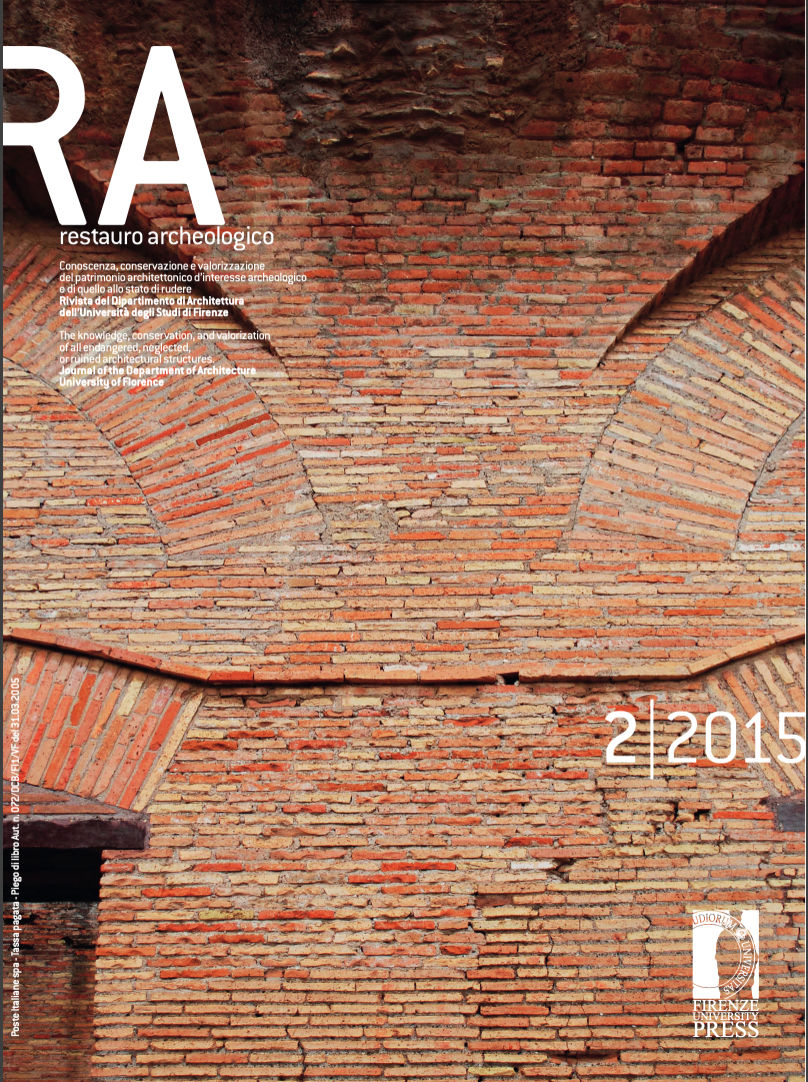Conservazione dell’architettura funeraria etrusca. Il caso dell’ipogeo di marciana scavato nel granito
Published 2016-07-08
Keywords
- Etruscan funerary architecture,
- Cruciform plan hypogeum,
- toponymy,
- monzogranite
How to Cite
Abstract
The problematic nature of Etruscan funerary architecture conservation due to the peculiar environmental conditions consisting of underground positions with flows of visitors represents a typical aim of the archaeological restoration The study case should be considered as emblematic for the iconographic relevance of the gentilitial etruscan tomb, of late orientalizing or archaic age, and for the particular physical nature of the hypogeum which is entirely excavated in a granodiorite rockmass in the center of Marciana village (Isola d 'Elba). The documental uniqueness of the hypogeum, currently under final determination, and the exceptional nature of the environment of the ancient site as well as the necessary radical measures to safeguard and specific intervention of consolidation and restoration are described from multiple viewpoints. In addition to the aspects relating to the conservation problems, the cruciform plan chronology of this extraordinary hypogeum was taken in account.


